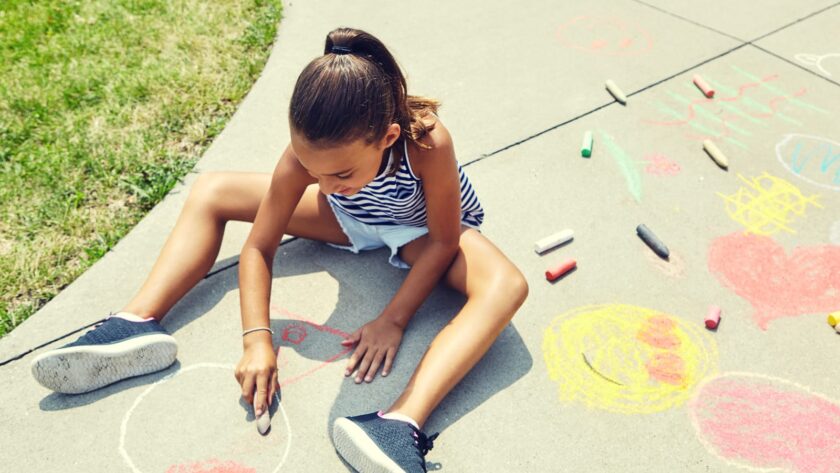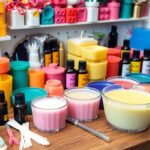Whether you’re searching for a new, exciting hobby or you’re already contemplating the notion of drawing as a hobby, you’ve landed in the right place. Drawing, one of humanity’s oldest forms of expression, is a fascinating, fulfilling pastime accessible to everyone, regardless of age or artistic prowess. This comprehensive guide offers you the ropes of starting your journey in the art world, sharing why drawing could be your next best hobby and offering tips to get you started.
Table of Contents
Key Takeaways
- Drawing is a universal hobby that cuts across ages and cultures, offering an avenue for self-expression and creativity.
- Embracing drawing as a hobby can yield numerous benefits, including stress relief, improved focus, and enhanced creativity.
- Starting to draw requires minimal equipment, and you can progress at your own pace.
- While challenges exist, overcoming them can lead to rewarding personal growth and improved artistic skills.
- Hobbyists can monetize their drawing skills in various ways.
What is Drawing as a Hobby?

Drawing as a hobby is all about expressing your thoughts, emotions, and observations through the visual medium of lines and shapes. While many associate drawing with professional artists, anyone can pick up a pencil and start drawing. It’s a relaxing, engaging activity that can be practiced anywhere, anytime. You don’t need fancy equipment or extensive training to get started; a simple pencil and paper are enough.
Can Drawing Be a Hobby?
Absolutely! For many people, drawing is a preferred pastime, offering a creative outlet after a long day or during free time. Drawing not only allows you to create unique art pieces but also serves as a medium for emotional expression and mental relaxation. It’s a flexible hobby that fits into any schedule. Whether you have a few minutes or a few hours, you can create something beautiful and satisfying.
What Types of People Like Drawing?
Drawing as a hobby can appeal to a wide range of people. For the creatively inclined, it provides an outlet for expressing their artistic thoughts. For those seeking a form of relaxation or stress relief, drawing can serve as a therapeutic activity. The beauty of drawing lies in its universality. Age, profession, or background doesn’t matter. Whether you’re a student, a busy professional, a parent, or a retiree, drawing can add a splash of creativity to your life.
Benefits: Why Drawing Could Be a Good Hobby?
Drawing has a multitude of benefits that make it an excellent hobby. Let’s delve into some of them:
- Enhanced Creativity: Drawing challenges you to envision and create unique pieces, thereby stimulating your creative thinking.
- Improved Concentration: It requires focus and attention to detail, helping to boost your concentration skills.
- Stress Relief: The act of drawing can be calming and therapeutic, making it a great stress-reliever.
- Accessibility: You can draw virtually anywhere, making it a highly convenient hobby.
- Affordability: Starting costs for drawing are low. All you need is paper and a pencil!
Are There Any Potential Challenges When Embracing Drawing as a Hobby?
Every hobby comes with its set of challenges, and drawing is no exception. One of the most common challenges is the feeling of inadequacy or frustration when your drawings don’t turn out as you hoped. But remember, every artist starts somewhere, and practice makes perfect. Another challenge could be finding inspiration or dealing with ‘artist’s block.’ The key is to remain patient and keep trying different things until you find what works best for you. Overcoming these hurdles is part of the journey and makes your progress all the more rewarding.
How To Start Drawing As A Hobby
Embarking on your drawing journey is both exciting and easy. Here’s a step-by-step guide to help you get started:
- Gather Your Materials: Begin with basic materials like pencils, erasers, and paper. As you progress, you can explore other mediums like colored pencils, pastels, or charcoal.
- Start Simple: Begin with simple shapes or objects. The goal is not perfection but practice. As your comfort and skills improve, tackle more complex subjects.
- Learn from Others: Use online resources, books, and tutorials to learn various techniques and styles. Observing and replicating the works of others can be a great learning tool.
- Practice Regularly: Just like any other skill, consistency is key in drawing. The more you practice, the more your skills will improve.
- Have Fun: The most important thing is to enjoy the process. Your drawings don’t have to be perfect. They’re a reflection of your creativity and personal growth.
Can You Make Money From Drawing?
Yes, there are numerous avenues to monetize your drawing skills. You can sell original artwork or prints online, offer custom portrait services, or start teaching drawing classes. You could also venture into digital art and work on graphic design projects. The key is to create a portfolio showcasing your work and market it to the right audience.
Similar Hobbies To Drawing
If you enjoy drawing, you might also be interested in similar creative hobbies. Here are a few:
- Painting: It’s another form of visual art that allows more color exploration.
- Calligraphy: This art of beautiful handwriting can be a meditative and rewarding hobby.
- Sculpture: If you prefer a more tactile experience, sculpting could be your thing. It involves creating three-dimensional art objects.
Alternative Hobbies To Drawing
Not everyone is inclined towards visual arts, and that’s okay. If you’re looking for alternatives to drawing, consider these options:
- Photography: It offers a unique blend of creativity and technology, allowing you to capture the world from different perspectives.
- Cooking or Baking: These can be immensely satisfying hobbies that also result in delicious outcomes!
- Gardening: If you love nature, gardening can be a relaxing hobby that also beautifies your surroundings.
Where To Learn More about Drawing
There are countless resources available to help you learn and master drawing. Some popular platforms include YouTube, Skillshare, and Udemy, offering tutorials and courses ranging from basic to advanced levels. Additionally, art blogs, online communities, and local workshops can provide invaluable tips, feedback, and inspiration.
FAQ
1. Is drawing a good hobby?
Absolutely! Drawing is a fantastic hobby that can boost creativity, provide a therapeutic outlet, and even lead to a new income stream.
2. Can I learn to draw if I don’t have natural talent?
Yes, drawing is a skill that can be learned with practice and patience. While natural talent can give you a headstart, consistent practice is key to improvement.
3. Do I need expensive materials to start drawing?
Not at all. You can start drawing with a simple pencil and a piece of paper.
4. Can I make money from my drawings?
Yes, there are numerous ways to monetize your drawing skills, including selling your artwork, offering custom drawing services, or teaching drawing classes.
5. What are some good resources for learning to draw?
Online platforms like YouTube, Skillshare, and Udemy offer a wealth of drawing tutorials and courses. Art books and local workshops can also be excellent resources.
In conclusion, drawing as a hobby is a rewarding, accessible, and fun activity that allows you to express your creativity, find relaxation, and even potentially earn money. So, why not pick up that pencil and let your creativity flow? The world of drawing awaits you!


